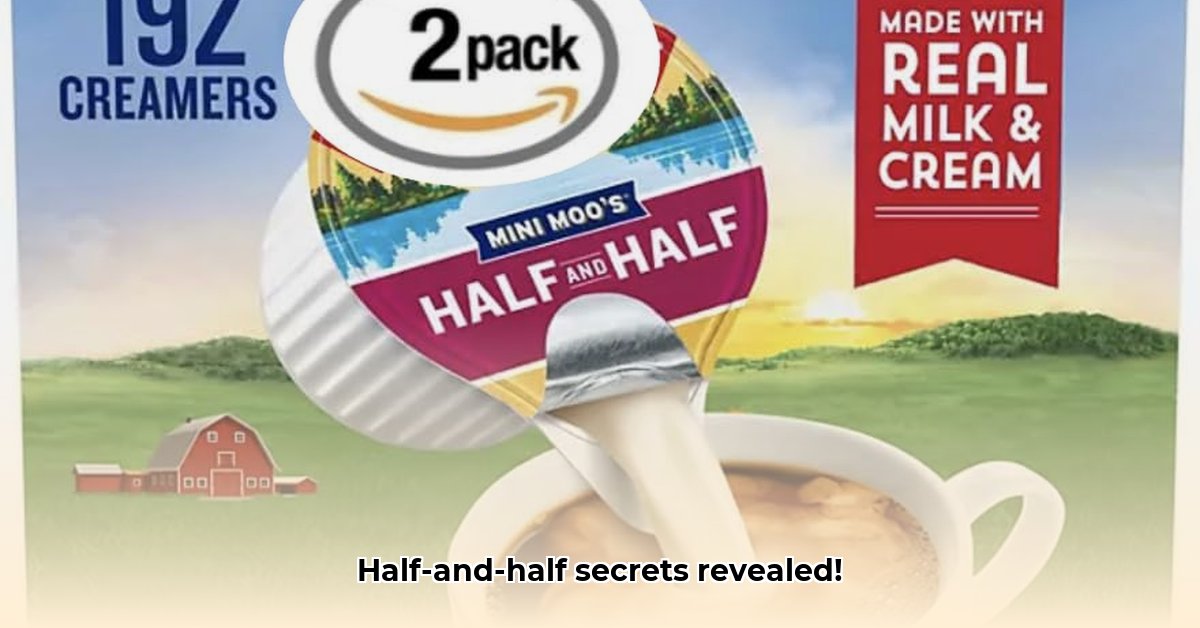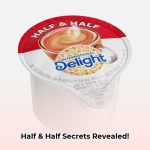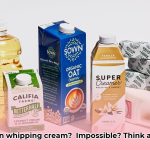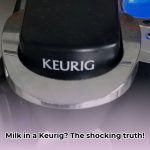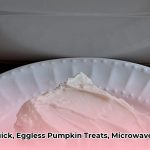Ever wonder what the real difference is between creamer and half-and-half? They both make your coffee taste great, but they’re actually quite different. This guide breaks down everything you need to know, so you can choose the best option for your cup (and your recipes!). We’ll compare ingredients, nutrition facts, and even talk about how each one works in different dishes. Get ready to become a cream and creamer expert! For dairy-free options, check out these dairy-free cream alternatives.
Creamer vs. Half-and-Half: Unlocking the Dairy Dilemma
Let’s be honest, picking between creamer and half-and-half can feel like choosing between a million tiny coffee cups! Both perk up your morning joe, but they’re actually pretty different. Let’s dive in and clear up the confusion and help show you the best creamer or half-and-half for your specific needs.
Decoding the Composition: What’s Really in Each?
Half-and-half: This is the simpler of the two. As the name suggests, it’s a blend of equal parts whole milk and heavy cream. The FDA regulates half-and-half, defining it as containing between 10.5% and 18% milk fat. It offers a naturally creamy texture and a subtle richness, with no sneaky added sugars. You can even make it yourself by whisking together equal parts milk and cream at home!
Creamer: Creamers can be more complex. They come in both dairy and non-dairy varieties. Non-dairy creamers typically use a base of water, sugar, and vegetable oil, along with thickeners, stabilizers, and artificial flavors to mimic the creaminess of dairy. Some dairy creamers also use additives. Even plant-based creamers like almond or oat milk may contain added oils and gums. This mixed composition significantly impacts the nutrition facts, with some creamers packing in a surprising amount of added sugar. Are you conscious of your sugar intake when considering your coffee additions?
Nutritional Face-Off: A Head-to-Head Comparison
Let’s get down to the numbers. Keep in mind that these are approximate values, and different brands will vary. Always check the nutrition label on the specific product you’re considering. Understanding these nutritional differences in creamers is key to making informed choices.
| Feature | Half-and-Half (per 2 Tbsp) | Creamer (per 2 Tbsp – varies widely) |
|---|---|---|
| Calories | 20-40 | 20-50 |
| Fat | 1.7-3.5g (mostly milkfat) | Varies greatly; 0-5g, depending on the oils used |
| Sugar | Naturally occurring, ~1g | Often contains significant added sugars (0-5g or more) |
| Calcium | ~30mg | Usually lower than half-and-half |
| Other Ingredients | Naturally occurring milk components | May contain various stabilizers, emulsifiers, and artificial flavors |
Taste and Texture: The Sensory Story
Half-and-half offers a classic, subtle, naturally sweet creaminess. The flavor is gentle, letting your coffee’s taste take center stage. Creamers, however, often have a bolder flavor profile, sometimes sweeter, thanks to those added sugars and artificial flavorings. The texture tends to be smoother and more consistent than half-and-half, particularly in non-dairy options. Ultimately, taste is subjective – what one person loves, another might find too sweet or artificial. What influences your taste when you add dairy?
Beyond the Mug: Culinary Adventures
Half-and-half isn’t just a coffee companion. Its balanced blend of milk and cream makes it perfect for enriching creamy soups, sauces, scrambled eggs, and even some baked goods. You can use it in place of milk and cream in many recipes. Creamers, while sometimes used in baking, mostly shine in hot drinks. Their added sugars and other flavors typically limit their culinary uses outside of sweet treats. You can add creamer to hot oatmeal or pancake batter for added richness.
Decoding the Labels: Navigating the Dairy Maze
The word ‘creamer’ can be a bit of a trap. Some products use the term even if they’re dairy-based, adding to the confusion. So, always, always check the ingredients list! Look for “dairy-free” or “non-dairy” if you need to avoid dairy products. Similarly, be cautious of “fat-free” options, as they often replace the fat with other additives that may not be as healthy. Be sure to check the label for casein, a milk protein, which some non-dairy creamers contain. Are you ready to learn more about dairy alternatives?
Making the Best Choice: Your Actionable Guide
Here’s how to navigate the world of creamers and half-and-half with confidence:
- Become a Label Detective: Carefully read the ingredients list and nutritional information on every package.
- Keep it Simple: Choose products with the fewest added ingredients. The simpler, the better!
- Consider Your Diet: Select a product that suits your dietary needs and preferences (dairy-free, low sugar, etc.).
- Embrace Experimentation: Try different brands and types to find your perfect taste and texture match.
- Consider the Fat Content: If you’re watching your fat intake, half-and-half generally has a higher fat content than many creamers, but fat-free half-and-half options exist.
Ultimately, the choice between creamer and half-and-half comes down to personal preferences and dietary needs. We hope this guide gives you the knowledge to make the best choice for your coffee ritual and beyond!
How to Choose Between Dairy-Free Creamer and Half-and-Half for Baking
Key Takeaways:
- Half-and-half and creamers differ significantly in composition, affecting baking results.
- Half-and-half offers a richer, more natural flavor and is better for some recipes.
- Creamers provide convenience, shelf stability, and various flavors but may contain additives.
- Careful label reading is essential to understand ingredient differences.
How to choose between dairy-free creamer and half and half for baking depends on your recipe’s needs and your dietary preferences.
Understanding the Differences: Half-and-Half vs. Creamer
Let’s clarify the core differences between these two common baking ingredients. Half-and-half, a dairy product, is essentially a blend of milk and cream. Creamers, on the other hand, are a much broader category, including both dairy-based and dairy-free options. Dairy-free creamers are often plant-based (almond, soy, oat), aiming to mimic the creamy texture and flavor of dairy products. Understanding these baking ingredient differences is crucial for success.
Composition and Nutritional Profile
The nutritional composition varies considerably. Half-and-half generally boasts natural milk fats, providing richness and a smooth texture. However, it also contains lactose, a milk sugar that can pose challenges for lactose-intolerant individuals. Creamers, especially those that are not dairy-free, often contain added sugars, artificial flavors, and stabilizers to enhance taste, shelf life, and consistency. Some dairy-free versions utilize natural thickeners and healthy fats, but it’s crucial to check the label. What is the nutritional profile of your dairy-free alternatives?
Here’s a simplified comparison (per 2 tablespoons):
| Feature | Half-and-Half | Dairy-Free Creamer |
|---|---|---|
| Primary Ingredient | Milk and Cream | Varies (almond, soy, oat, etc.) |
| Fat Content | Moderate (around 10-12%) | Varies widely (0-5g) |
| Sugar Content | Naturally occurring, minimal (~1g) | Often added, varies widely (0-5g) |
| Lactose | Present | Absent |
| Texture | Rich, creamy | Can be thinner or thicker |
Baking Applications: Which to Choose?
How to choose between dairy-free creamer and half and half for baking directly impacts your outcome. Half-and-half works well in recipes where a richer, more natural dairy flavor is desired – think creamy sauces, some cakes, or frostings. Its natural fat content also contributes to a desirable texture and moisture. However, for recipes requiring a dairy-free option, or where a specific flavor profile is sought (e.g., vanilla, hazelnut), a plant-based creamer is needed. How do you adjust your baking recipes for dairy-free creamers?
Using creamer instead of half-and-half might require recipe adjustments. For instance, you may need to use a slightly larger quantity to achieve the same level of creaminess, and you might need to compensate for the flavor differences. Adding a tablespoon of melted butter when using non-dairy creamers can help mimic the fat content of half-and-half.
Making Informed Decisions
When choosing between half-and-half and creamer for baking, consider these factors:
- Dietary needs: Are you or your intended consumers lactose intolerant or following a vegan diet?
- Recipe requirements: Does the recipe call for a specific flavor
- Achieve Anesthesiology Work-Life Balance: Your Guide - December 4, 2025
- Unlock Young Doctors’ Work-Life Balance: Actionable Strategies Now - December 2, 2025
- Unlock Life Harmony: Work-Life Integration Guide - November 30, 2025
